POETRY BY BRUSHSTROKE
English Romanticism
First half of the 19th century
English Romanticism: Turner discovers the effects of light
Where do we come from, how was life born on earth? Charles Darwin finds an answer to this question key to mankind during his voyage of nearly five years by ship in the 19th century— an answer that will change the prevailing beliefs about life. He discovers that species are adapting to their environment and are becoming increasingly complex. Darwin’s modern theory of evolution thus contradicts the theory of creation, according to which God created all beings in their present form and man in his image, and marks the beginning of a new worldview. The painter William Turner is living at the same time in England. Like Darwin, he believes it is time to break through to new ways of thinking and turn towards nature. The two men met in London’s elite club “Athenaeum”.
Romanticism has its origins in English literature, which rejects the Rationalism of the Enlightenment and devotes itself to nature and the world of emotions. Landscapes as untouched and remote sceneries hold the attention of poets like Blake and Wordsworth. They also influence the painters who find their new focus in landscape motifs and seascapes, and experiment with color effects. The most famous English Romantic artist is William Turner, the “inventor of the atmospheric landscape”. In his work, color begins to emancipate itself from form. Contours dissolve, surfaces blur and form another dimension. Relief-like colors override form, yet leave room for detailed scenes. Long before the Impressionists, the artist focused on conveying the effect of his motifs under certain lighting conditions. Turner is a pioneer of art, just as his contemporary Darwin is a pioneer of science.
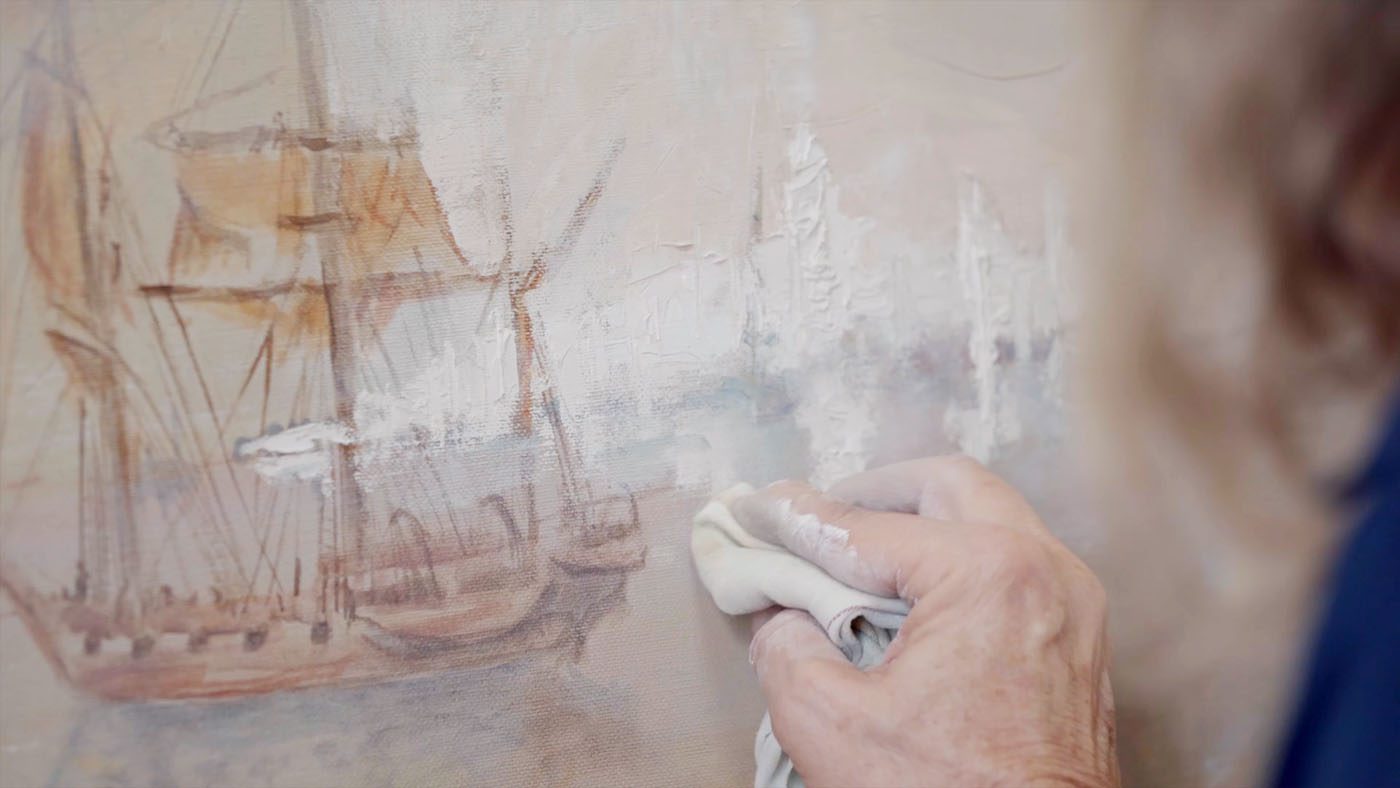
DEPARTURE TO ANOTHER WORLD
On 27 December 1831, the HMS Beagle sets sail. The two-master sails around the world on its journey of nearly five years, commissioned to map the coasts of South America. On board is the young Charles Darwin, who will develop the theory of evolution from the material he collects during his scientific research. Back in London, the expedition gives him access to the Athenaeum Club, open only to high-profile members of distinguished society. Among them is the painter William Turner, who is known for his interest in the natural sciences. The researcher and the artist probably meet in this circle, with Turner learning of Darwin’s observations and scientific conclusions, which initially cause an uproar. Darwin therefore intensively discussed his theory of evolution before publishing it in 1859.
Today we know that Charles Darwin probably achieved the greatest breakthrough for our modern understanding of the origin and evolution of life. Looking back, the departure of the HMS Beagle is therefore the departure towards a new worldview. How would William Turner have painted this moment? Wolfgang Beltracchi answers this question with a painting created using the artistic voice of Turner. The painting technique of the English artist was already pointing towards the modern age. Pastel-colored layers of pastose flow into each other, sometimes interrupted by accents of strong color and contours. In his work, Beltracchi orientates himself on Turner’s seascapes. Using Turner’s artistic voice, he applies layers of paint, molds them into form and light, and has the “Beagle” set course for the New World under the bright, heavenly skies. On the horizon, a second ship is already disappearing into the light.
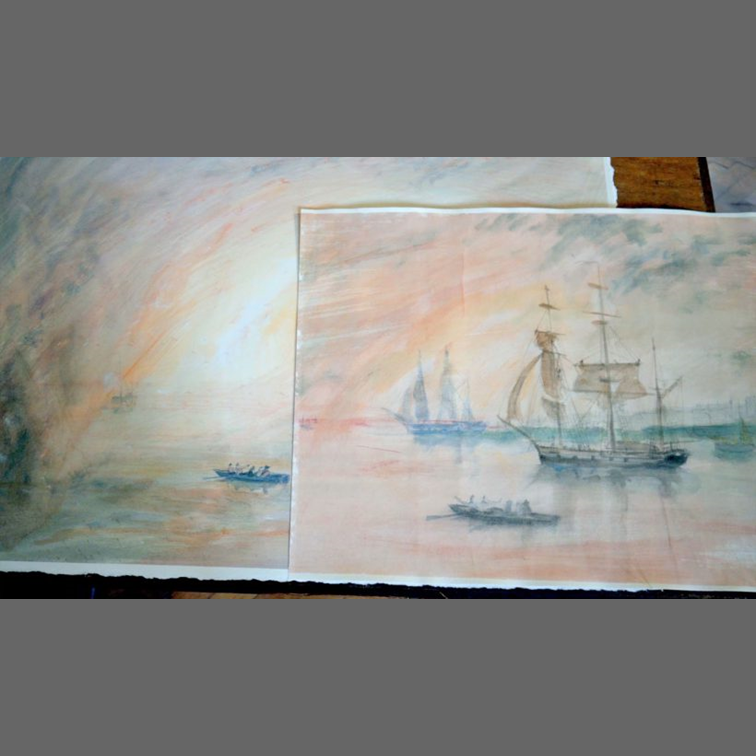
In various preliminary studies, the artist works on the possible composition of the picture using watercolors until form and light harmonize.
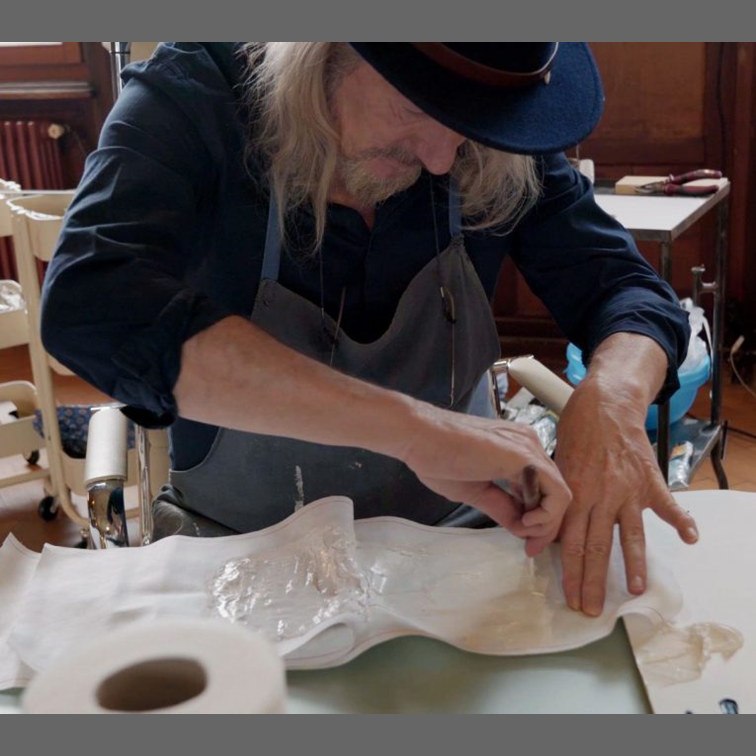
Wolfgang Beltracchi scrapes up the paint, from which the superfluous oil has been separated, with a putty knife.
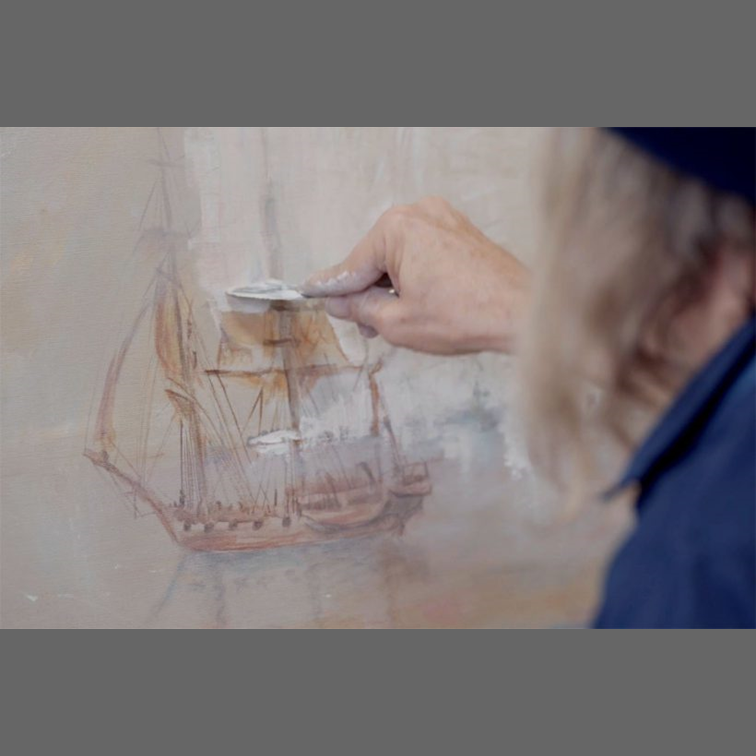
The thick paint is applied with putty knives, painting knives, rags, brush handles, and paint that is almost dry shaped with fingers to gain the corporality of Turner’s artistic voice.
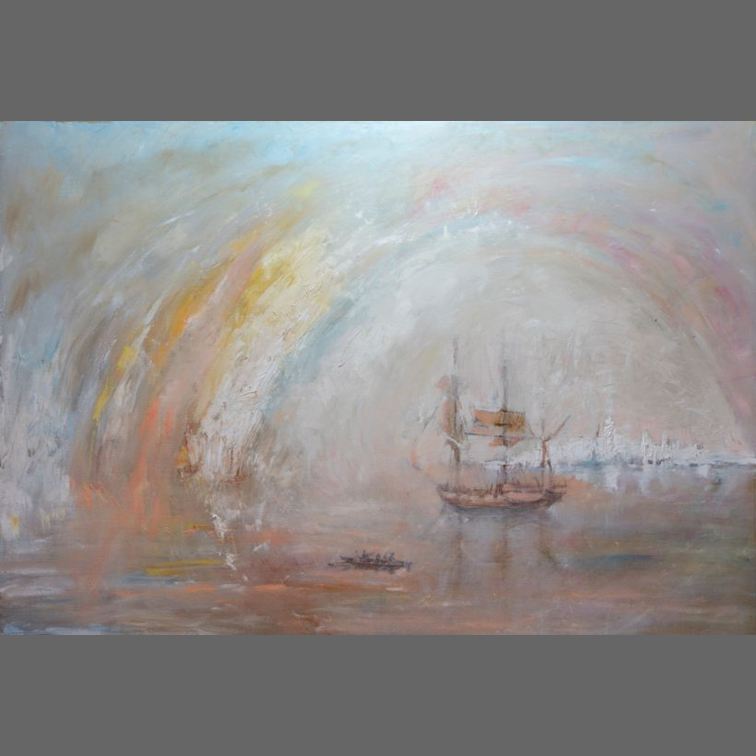
English Romanticism
John Constable and William Turner are the most important representatives of English Romanticism. The predominant motifs are landscapes, which are, however, painted using very diverse techniques.
1. DREAM-LIKE
Every landscape seems perfect. Because Romanticism has no ambitions to be documental. It creates dream worlds, composed of sketches from the painters’ own imaginations.
2. SEA OF LIGHT
In Romanticism, colors are used for the first time as a means of creating a mystical, eerie or melancholic mood. The atmosphere created in this way takes the viewer to a distant world, far away from real life.
3. KNIGHTLY
The expression “romantic“ derives from the French word “roman“, which goes back to the vernacular term for knights novels in the Middle Ages. The new intellectual movement of Romanticism chose this label to distinguish itself from classical antiquity.
4. UPGRADING WATERCOLORS
Watercolor painting already existed in ancient Egypt. In later eras, the artists mostly used watercolors for creating studies, as Dürer and Rembrandt did. William Turner, who regarded watercolors as independent works, first gained broad recognition for this technique.
5. FREEDOM OF STYLE
The artists of English Romanticism approached similar motifs in very different ways. Constable changed from a naturalistic technique to a painting technique that emphasizes the brushstroke. With his ever-progressing dematerialization of motifs, Turner laid the foundation for modern art.
Eras of art in the KAIROS project
Medieval art
Early Netherlandish painting
Italian Renaissance
Mannerism
Early Baroque
Rokoko